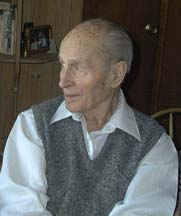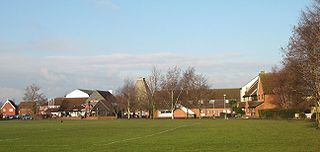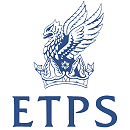History
In 1917, the Experimental Aircraft Flight of the Central Flying School was transferred from Upavon, Wiltshire to a site on the heathland at Martlesham, Suffolk, and on 16 January 1917 Martlesham Heath Airfield was officially opened, as an experimental airfield. The unit was renamed the Aeroplane Experimental Unit, Royal Flying Corps. After the end of World War I the site continued to be used and was, once again, renamed as the Aeroplane and Armament Experimental Establishment of the Royal Air Force.
At the outbreak of the Second World War, on 9 September, [1] the A&AEE was removed to RAF Boscombe Down, Wiltshire, owing to the proximity of Martlesham Heath to the east coast and its vulnerability to enemy attack. It remained part of No. 23 Group RAF. [2]
About fifty aircraft and the military and civilian personnel had arrived at Boscombe down by mid-September 1939. [3] The Establishment was declared "open" on 20 September though it lacked access to ranges to test weapons. [4] The site had been established as a regional control centre ("Flying Control") for RAF Bomber Command; the Blind Approach Training and Development Unit was formed there that September. However aircraft operating facilities at the time were a grass field, a small area of hardstanding, five pre-1930s hangars and a single new one, and some other permanent structures. Wartime construction was temporary and underfunded; a concrete runway – considered essential to operate the larger aircraft under test – was not completed until early 1945.
During the course of the war the A&AEE had to expand its facilities as it took on other roles. Its work including testing armaments, performance and acceptance trials for all new service aircraft and testing of "rogue" handling aircraft. It also developed improvements in aircraft equipment such as demisting equipment for windshields and exhaust flame suppression.
In 1946, in common with most other military research establishments, the A&AEE came under the Ministry of Supply. In 1950 it absorbed the Airborne Forces Experimental Establishment. When the Ministry of Supply was wound up in 1959 it passed to the Ministry of Aviation, then the Ministry of Technology in 1967, Ministry of Aviation Supply in 1970, and then to the Ministry of Defence in 1971. [5]

The A&AEE has witnessed many significant developments in the British aviation industry, including trials of many aircraft flown by the British armed forces since the Second World War, such as the first flights of the English Electric P 1, forerunner of the Lightning, and the BAC TSR.2. The site was shared with the School of Aviation Medicine. In terms of amenities, the establishment was equipped with some impressive test facilities such as a wind tunnel (supporting speeds up to 400 mph (640 km/h)), a large environmental hangar (creating temperatures between −40 °C to +50 °C and humidities up to 100%) and a weighbridge that can weigh and determine the centre of gravity of aircraft up to 135 tons. [6]
In 1992, the A&AEE was renamed the Aircraft and Armament Evaluation Establishment when experimental work moved to the Defence Research Agency. Responsibility for the site passed from the MoD Procurement Executive to the Defence Test and Evaluation Organisation (DTEO) in 1993, and subsequently to the Defence Evaluation and Research Agency (DERA) in 1995. In 2001 DERA was split into two parts, one being the Defence Science and Technology Laboratory (Dstl) which remains within the civil service, and the rest going to form part of the company QinetiQ to which the staff at Boscombe Down were transferred.










